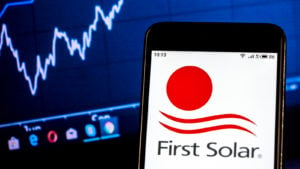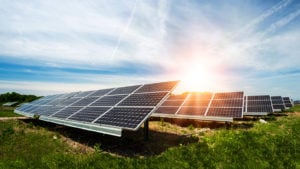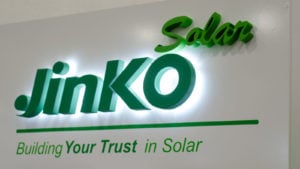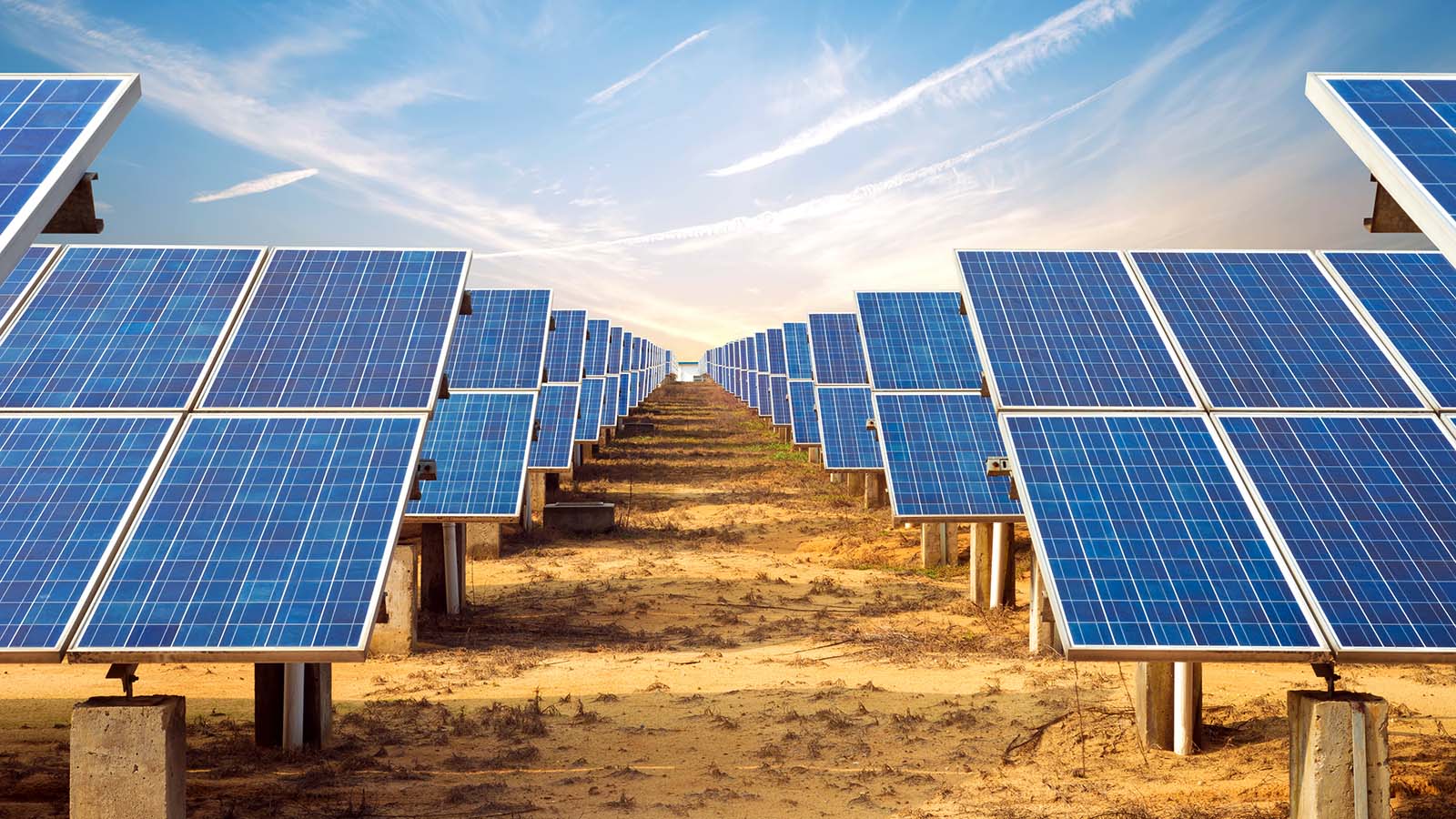The current situation in clean energy stocks reminds several analysts of the dot-com boom in the late 1990s. According to data from Morningstar, global inflows into clean energy exchange-traded funds (ETFs) jumped to $14.7 billion in the six months to the end of March, up from only $1.3 billion in the same period a year prior.
Growth in clean energy companies is a secular trend. Additionally, the industry will be helped by President Joe Biden’s plans to support clean energy projects. But as Patrick Pouyanne, CEO of Total (NYSE:TTE), said, “there is a bubble” in the renewables sector. Pouyanne attributed the trend to a limited supply of assets of significant scale.
Again, this doesn’t mean you should not invest in the renewables sector. Moving forward, these companies will be a key contributor to our sustainable future. But it’s important to take caution. Overvaluation concerns are real, and you should pay heed.
With that in mind, investors should note that these seven clean energy stocks are trading at very high price multiples:
- First Solar (NASDAQ:FSLR)
- Azure Power Global (NYSE:AZRE)
- SolarEdge Technologies (NASDAQ:SEDG)
- Ocean Power Technologies (NYSEAMERICAN:OPTT)
- Sunnova Energy International (NYSE:NOVA)
- Equinor ASA (NYSE:EQNR)
- JinkoSolar (NYSE:JKS)
Clean Energy Stocks: First Solar (FSLR)

First Solar is an interesting stock to assess because of the wild swings it has seen this year. The solar company has a 52-week high of $112.50 per share and a 52-week low of $60.40.
Currently, shares of the Arizona-based First Solar are changing hands for a little more than $90. Investors have benefitted handsomely from this one after the stock bottomed out at $60 in September 2020.
There is a lot to admire about First Solar. It has divested legacy assets and is now focused on solar panel manufacturing. The company also announced two major manufacturing expansions, which will double capacity.
One of these investments is a $684 million outlay in India. The other is a $680 million investment in the U.S. In aggregate, management is forecasting a total capacity of 16 gigawatts (GW) by 2024.
The only thing going against the stock is its valuation. Investors priced in gains before they have occurred, making FSLR stock lose its appeal.
Azure Power Global (AZRE)

Most solar companies primarily have a presence in the U.S. and Europe. But other regions in the world offer great potential — like India, the second-most populous country globally.
The country benefits from clear sunny weather 250 to 300 days per year, according to India’s Ministry of New and Renewable Energy. It has a solar energy potential of up to 748 GW but only tapped a small portion of it last year.
Nascent potential and increasing political support are two of the main reasons Azure Power is attracting so much interest. However, there are some limiting factors to the India-based company’s growth potential.
The country is building up a considerable amount of infrastructure, which is an expensive endeavor that takes time. Covid-19 has also been a drag on India’s economy. These could slow Azure Power’s growth in the next few years.
Additionally, Azure Power has $1.2 billion in long-term debt, so a bet on its shares might be risky for now. The price of AZRE stock has corrected significantly in the last month, so there is merit to treating this one as a day trade. But there are better clean energy stocks more worthy of your attention.
Clean Energy Stocks: SolarEdge Technologies (SEDG)

SolarEdge Technologies is developing a range of tech used in solar photovoltaic (PV) cell installations, focusing on retail and commercial settings. Since attaining a 52-week high of $377 in January, the stock has fallen by 26.6% and is changing hands for $276 as of this writing.
This sharp oscillation is understandable. First, businesses are reopening worldwide, so the focus is shifting from renewable energy stocks. Second, the fear of rising interest rates is also making investors uneasy. Finally, there are supply chain issues that are hampering production and increasing costs.
If we hone in on SolarEdge in particular, the company has done well recently. According to CNBC, it has managed to beat analyst expectations four times in the last five quarters. Most recently, SolarEdge reported another stellar quarter that handily surpassed Wall Street’s expectations.
Adjusted earnings and revenue came in at $1.28 per share and $480.1 million, respectively. The company provided third-quarter revenue guidance in a range of $520 million to $540 million.
As a result of the earnings report, shares jumped more than 15%. As I write this, SEDG stock is trading at a price-to-earnings (P/E) ratio of 112.13x. So, they are firmly in the overvalued category.
Ocean Power Technologies (OPTT)

Ocean Power Technologies is a unique renewable energy company because of its flagship product. The PB3 Power Buoy harnesses the kinetic energy of ocean waves to produce electricity.
The device consists of three main parts. The first is the floating system, which rides the waves to capture energy and produce electricity. The other parts are a spar and a heavy plate, which are submerged in the ocean and keep the device in place. Meanwhile, an onboard lithium-ion battery stores the energy produced by the device.
There are several use cases for the technology, but the most common one is offshore drilling. The product naturally lends itself to these projects and is scalable since users can set up multiple products to harness more energy. Ocean Power also has a hybrid product using both solar power and ocean waves.
The only problem is that the company is still unprofitable and working toward commercializing its product. On top of that, the fundamentals leave a lot to be desired. Revenues are declining and the gross loss is ballooning; it doesn’t have many customers, and cash flows are not stable.
Ocean Power is also dependent on the oil industry, which, as you know, has not been having a great time. The broader sector could push shares upward, but there is very little inherent value in the company at this stage of the game.
Clean Energy Stocks: Sunnova (NOVA)

The U.S. residential solar industry has done well in the last few years, and the stocks attached to the space are reaping the rewards. One of the names that features prominently in discussions is Sunnova.
NOVA stock has a one-year return of 30% — not too shabby considering the issues with the company’s business model.
As more people go solar, they are looking for the most affordable option out there. Not many people have the resources to purchase residential systems outright. Instead, they rely on a myriad of options, including long-term loans, to acquire solar systems for their homes.
SolarCity’s business model is based around leases, loans and power purchase agreements (PPAs) that last up to 25 years. The problem with this model is that it does not consider the fast-paced changes in the solar sector.
Technology is consistently on the move, and the cost of solar energy is coming down with each passing year. If a customer is locked into a long-term contract and the technology gets cheaper, default rates will rise as people try to get out of the agreements.
Sunnova works with local contractors and outsources a lot of its work, making it more flexible in responding to local needs. Any solar business looking to stand out from the competition needs to have a local presence. But this approach also deprives a company of strong institutional knowledge. It’s yet another flaw in Sunnova’s business model.
Equinor ASA (EQNR)

Norwegian energy giant Equinor is the sum of many parts. Its operations include projects in oil, gas, wind and solar energy.
Due to low energy prices, the company has struggled in recent quarters. The transportation sector has been devastated by Covid-19, and although things are getting better, volumes are still off pre-pandemic levels. Unfortunately, the bottom line for Equinor has suffered badly as a result.
However, a silver lining is Equinor’s shift toward offshore wind and solar power. Renewables had a better time than the oil and gas sector in 2020, which is reflected in the company’s results.
In 2020, the renewables segment managed $163 million in net income, which is not bad since this is still a burgeoning area. Equinor has stated that its mission is to achieve net-zero carbon emissions by 2050. Hence, expect the company to keep investing in this segment.
Overall, Equinor is struggling and will continue to do so until we see a return of demand for oil and gas production. The recent production declines, widening loss and cut in distribution means this company is on the ropes, where it will remain for some time to come.
Clean Energy Stocks: JinkoSolar (JKS)

JinkoSolar is one of the largest solar module manufacturers in the world. It has performed considerably well in terms of fundamentals and price momentum in the last year.
However, the company is based in China, which brings some risk to an investment in JKS stock. We saw a glimpse of that recently when U.S. Customs officials detained solar panels manufactured by JinkoSolar. The panels were suspected to contain materials produced by the forced labor of China’s Muslim minority groups, something the Biden administration is taking a firm stance against.
North America represents the majority of sales for the company. Amid current tensions between the U.S. and China, this latest development is cause for concern. However, JKS stock bulls can take heart from the company’s strategic alliance with Contemporary Amperex Technology, a manufacturer of lithium-ion batteries.
It is a critical partnership because it addresses the main concern for solar energy manufacturers — storage. No matter the amount of solar energy you produce, it won’t matter if you don’t have effective storage options. Nevertheless, investing in JKS stock is risky at the moment.
On the publication date, Faizan Farooque did not have (either directly or indirectly) any positions in the securities mentioned in this article. The opinions expressed in this article are those of the writer, subject to the InvestorPlace.com Publishing Guidelines.
Faizan Farooque is a contributing author for InvestorPlace.com and numerous other financial sites. Faizan has several years of experience in analyzing the stock market and was a former data journalist at S&P Global Market Intelligence. His passion is to help the average investor make more informed decisions regarding their portfolio. Faizan does not directly own the securities mentioned above.
